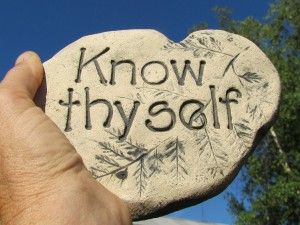Creativity
Understand Your Strengths
Digger deeper into the character strengths of the VIA classification
Posted November 20, 2014

- “I don’t like my highest strengths.”
- “Why is prudence listed as one of the most important qualities in human beings?”
- “What’s the difference between curiosity and love of learning?”
- “Judgment sounds too negative. How is that a strength?”
These are common questions and statements people make after taking the VIA Survey, the only free and valid, online survey measuring positive personality traits. Having a deeper understanding of each character strength is an important step in self-understanding and personal growth.
Character strengths are universal. One of the most unique and meaningful aspects of the character strengths within the VIA Classification is that the strengths are immediately recognizable and understandable. This is, after all, a common language for you to understand and explore what is best about you.
Coaches and counselors use this “common language” with their clients to help them identify their best qualities (e.g., see coaching presentation by Harvard psychologist Carol Kaufman). Managers use the “language” to help their employees become more productive and happy at work (e.g., see IBM Australia video), and teachers use it to help their students entrench more deeply in learning (e.g., see a classroom video of a teacher in Utah). The rest of us use the language to be “on the same page” with one another when conversing about the good and supporting one another.
Nevertheless, sometimes confusion arises around what is meant by certain strengths. For example, if you look at this user-friendly strengths handout you might not immediately understand the benefits of strengths like humility and judgment. Here are some clarifications to help ensure you understand the basics of these character strengths:
This character strength is one of the most common strengths across cultures and nations. In today’s culture, this word has a negative connation relating to judging someone harshly or being overly critical. But, the word judgment has been used by philosophers throughout history to connote a virtue of rationality and reason. In the VIA Classification, judgment refers to critical thinking which is the main feature of this strength that is being measured. This means the use of reason and logic to analyze the details of situations, problems, and ideas. Those high in judgment are able to view things from many different angles and thus are open-minded to different responses and ideas.
This character strength is one of the least common strengths across cultures and nations. Humility tends to get “lost” or discarded by people working with strengths. This is too bad as humility is an important strength that refers to the individual having a strong sense of who they are and good self-esteem, yet they care enough about others to place the attention on them. It is the overuse of humility – self-deprecation – that people incorrectly tag as actual humility. The character strength of humility has been linked with generosity and kindness, as well as individuals having good friendships.
This character strength is not only one of the least endorsed strengths around the world but one of the least understood strengths. Prudence refers to being “wisely cautious.” Prudence gets a bad rap because individuals tend to think of the overuse of prudence (i.e., stuffiness and rigidity that negatively impacts others) as prudence. However, when prudence is expressed in a balanced way, it is far from stuffiness; instead, it is being conscientious, planful, goal-oriented, and respectful to others. Prudent people usually take the time to think things through, such as examining and reflecting on situations before acting, and approaching life with carefulness.
Curiosity vs. love of learning
These two character strengths commonly co-occur for individuals as a dyad in their signature strengths; this dyad is one of the three most common character strengths dyads around the world. However, these strengths do not always co-occur and they can present on opposite poles for some people (e.g., as #1 and #24 in character strengths profiles). Thus, there are important distinctions. Curiosity is a pursuit of novelty and newness while love of learning is the pursuit of deep learning and knowledge around a specific topic area. While curiosity might initially draw people to a new pathway of knowledge, it is love of learning that sustains them and helps them dig into the material in a systematic way.
There is a fair amount of overlap and a high correlation between these two strengths. One way to distinguish them is to view those high in love as valuing close relationships and expressing warmth and genuineness to others, while kindness refers to doing thoughtful things for others, being generous with one’s time, and showing compassion to those in need. While this is one of the most common character strengths dyads, these strengths can present on opposite poles as well.
Leadership can be viewed in terms of “Big L” (movers and shakers, those who are mayors, governors, or CEOs) and “small l” (everyday leaders). The VIA Survey measures the latter type of leadership. This refers to individuals who are good at organizing people and projects, those who give all subordinates a fair chance, and those who get everyone in a group rallied around a common goal. Some people in important leadership positions may not have this as a signature strength and that’s fine, as those in leadership positions might have people that work for them to help do all the organizing and managing of activities. Good leaders (who may or may not have leadership as a top strength) are those who are highly self-aware of their signature strengths, use them effectively to motivate those who work for them, and inspire the character strengths of others to do their best and contribute to the organization.
Scientists have defined spirituality as “the search for the sacred.” While the VIA Survey has only one question that uses the word religion/religious/religiousness in it, a conceptualization of “sacred” is inclusive to individuals who view themselves as religious as well as those who do not. The VIA Survey items tap into different dimensions of spirituality such as sense of purpose, faith, calling, and meditation or prayer practice. No doubt individuals can engage or practice each of these in a number of ways – in nature, in a spiritual community, or at a formal institution such as a church, synagogue, temple, or mosque.
There are many forms of creativity and many ways to express it. The popular conception of creativity is that this strength is for the artists, musicians, and writers. Those individuals tend to create creative “products” and might have creativity as a signature strength, but creativity is more varietal than making creative things. The VIA Survey focuses on the trait of creativity and closely looks at creative thinking. Specifically, this refers to what researchers call divergent thinking – being able to think of many ways to solve a problem or to do a certain task. In this vein, creativity helps the individual to build new knowledge and to integrate new ideas with old ideas because they are always doing internal brainstorms and thinking “outside the box.” At the same time, many very creative people might not ever create a tangible product.
Conclusion
This post was intended to provide a jump-start for learning about several character strengths that cause confusion for people after taking the VIA Survey. If you are someone who realizes this study of character strengths is a lifelong journey, then continue to build your knowledge by visiting the leading nonprofit organization that is devoted to “advancing the science and practice of character strengths” – the VIA Institute on Character.




